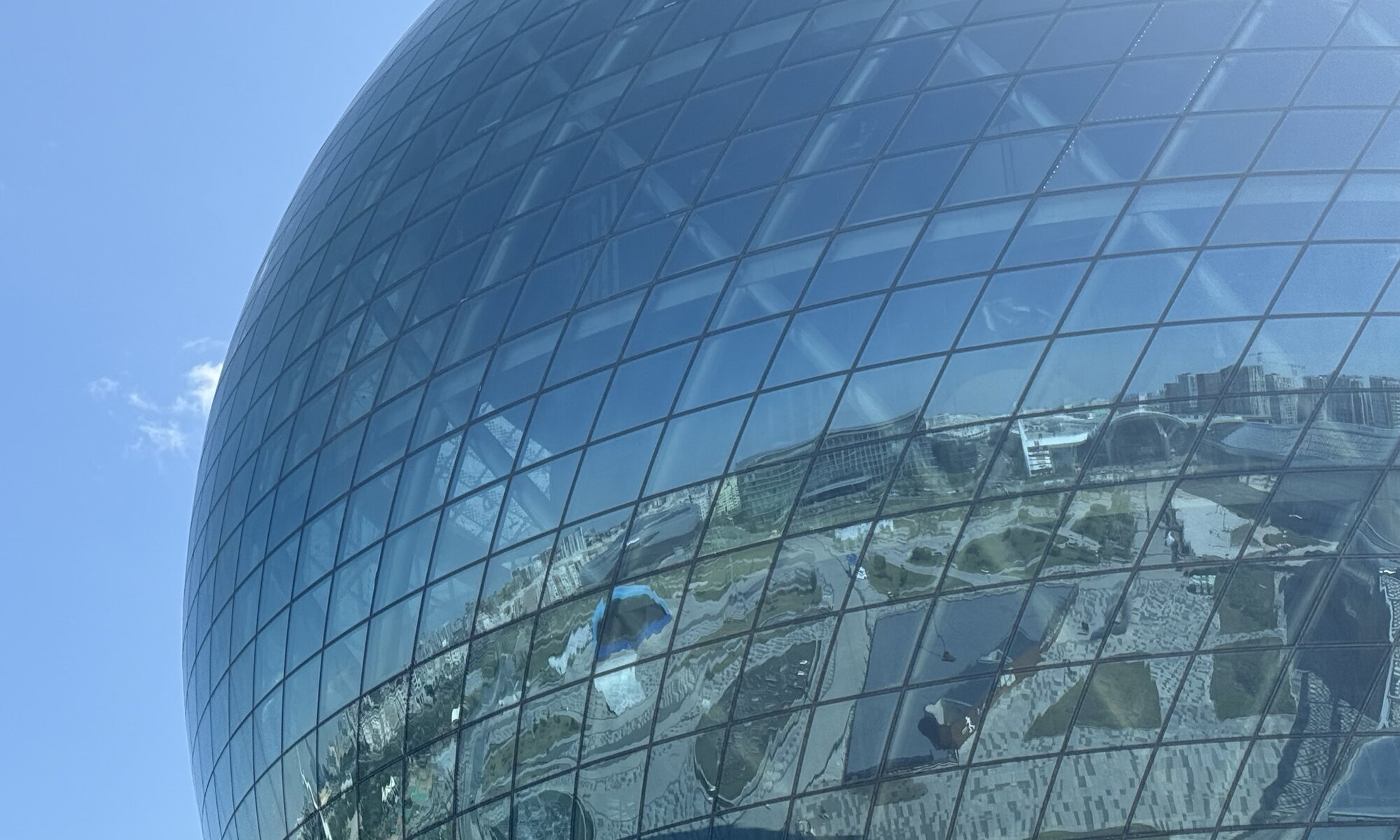The Nur Alem Pavilion stands out as the most recognizable symbol of Астана’s transformation into a city of innovation and ambition. This stunning building is an architectural marvel – a perfect glass sphere with 80 meters in diameter and rising 100 meters tall, making it the largest spherical building in the world. It was designed by the US-American architectural team Adrian Smith + Gordon Gill, renowned for their work on some of the world’s most iconic skyscrapers. Built for EXPO 2017, Nur Alem’s graceful curves and shimmering surface have since turned it into a true icon of the Kazakh capital.
Continue reading “Nur Alem”Iconic
Baiterek tower in Астана is a prominent symbol deeply intertwined with Kazakhstan’s modern history and cultural identity. Built between 1996 and 2002 to coincide with the capital’s relocation from Алматы to Астана in 1997, the tower stands 97 meters tall, symbolizing the year of this important transition. Its design is inspired by a Kazakh myth about the Tree of Life, where a sacred bird named Samruk laid an egg in the tree’s branches, represented by the golden sphere atop the tower. This concept embodies the connection between the earth, life, and the sky, making the tower more than just a structural landmark – it signifies new beginnings and the hopes of the nation.
Continue reading “Iconic”Unfinished mausoleum
Visiting the mausoleum of Khawaja Ahmed Yasawi in Түркістан, Kazakhstan is an unforgettable experience for anyone interested in history, architecture, or spirituality. The immense structure stands as one of the most remarkable examples of Timurid architecture, with its grand domes and intricate tile work catching the sunlight in stunning patterns. The mausoleum is not just a monument, but an active pilgrimage destination, drawing people from across the region to pay their respects and absorb the serene atmosphere that pervades the site.
Continue reading “Unfinished mausoleum”Charyn canyon
It is one of Kazakhstan’s most spectacular natural wonders, often compared to the Grand Canyon but with a character all its own. Located about 200 kilometers east of Алматы, it carves through the steppe for nearly 154 kilometers, with depths reaching up to 300 meters. The canyon’s most iconic segment is the Valley of Castles, so named because the spectacular rock formations evoke the towers and walls of ancient fortresses. Walking through this section, you’ll be surrounded by red and orange cliffs that shift in hue throughout the day, turning especially vibrant at sunrise and sunset.
Continue reading “Charyn canyon”Kolsai
The two Kolsai lakes near Саты offer a truly spectacular retreat for nature lovers and adventurers. Known as Kolsai-1 and Kolsai-2, these alpine jewels are encircled by pine forests, striking peaks, and lush slopes dotted with wildflowers. Kolsai-1, the lowest and most accessible, sits at around 1,800 meters above sea level and is an ideal spot for picnics, easy walking, and canoeing. The tranquility of the lake, especially in the early morning when mist hovers over crystal-clear waters, makes it a perfect escape from the buzz of daily life.
Continue reading “Kolsai”Буханка
Located within the rugged Tien Shan mountains, Kaindy lake is one of Kazakhstan’s most surreal natural wonders. Just a short drive from the small mountain village of Саты, the lake instantly captivates with its ghostly, submerged spruce trunks and impossibly clear, blue-green waters. At over 2,000 meters above sea level, the air is crisp and tinged with pine, and the scenery feels untouched – a living postcard that hardly seems real.
Continue reading “Буханка”Black canyon
The Қара каньон near Актогай is one of Kazakhstan’s lesser-known but truly awe-inspiring natural wonders. Stretching approximately three kilometers wide and plunging to depths of up to 300 meters, the canyon dazzles with its dramatic cliffs, layered rock faces, and vibrant colors that shift throughout the day. Standing on the edge, you are greeted by sweeping vistas and a remarkable sense of isolation, far from the crowds, making it perfect for travelers craving unspoiled wilderness and jaw-dropping photo opportunities.
Continue reading “Black canyon”Altyn-Emel
Altyn-Emel National Park in Kazakhstan is a remarkable destination for travelers seeking unique natural phenomena and diverse landscapes. Spanning over half a million hectares, the park preserves a fascinating mixture of desert, steppe, canyon, and mountain environments. One of its most extraordinary features is the singing dunes – a towering mass of quartz sand approximately 1.5 kilometers long and up to 120 meters high. These dunes produce an eerie, low humming sound when the dry sand grains rub together as the wind moves them, a rare phenomenon found only in a few places worldwide. The sound can carry for kilometers, creating a surreal atmosphere for visitors.
Continue reading “Altyn-Emel”Көктөбе
Kök-Töbe, often called the ‚green hill‘, rises over Алматы as a beloved symbol and vantage point for locals and visitors alike. Historically, this hill has served various purposes, from being a gathering spot before the Soviet era to acquiring its current reputation as a recreation area. In the 1960s, city leaders transformed it into a park, adding infrastructure that made it accessible and inviting. The installation of the cable car in the mid-1960s marked the start of its popularity, with further revitalization projects in the 2000s expanding both its attractions and amenities.
Continue reading “Көктөбе”28 Panfilowzy
The Panfilov park in Алматы is one of the city’s most beloved and historically rich green spaces, spanning around 18 hectares in the city center. It dates back to the late 19th century, originally established as a city garden over an old cemetery site. Over decades, the park’s name evolved several times – from Starokladbischensky park to Pushkin garden and Lenin park – before receiving its current designation in 1942. This renaming honored the heroic 28 Panfilov guardsmen, soldiers from Алматы and nearby regions who fought valiantly during World War II.
Continue reading “28 Panfilowzy”









